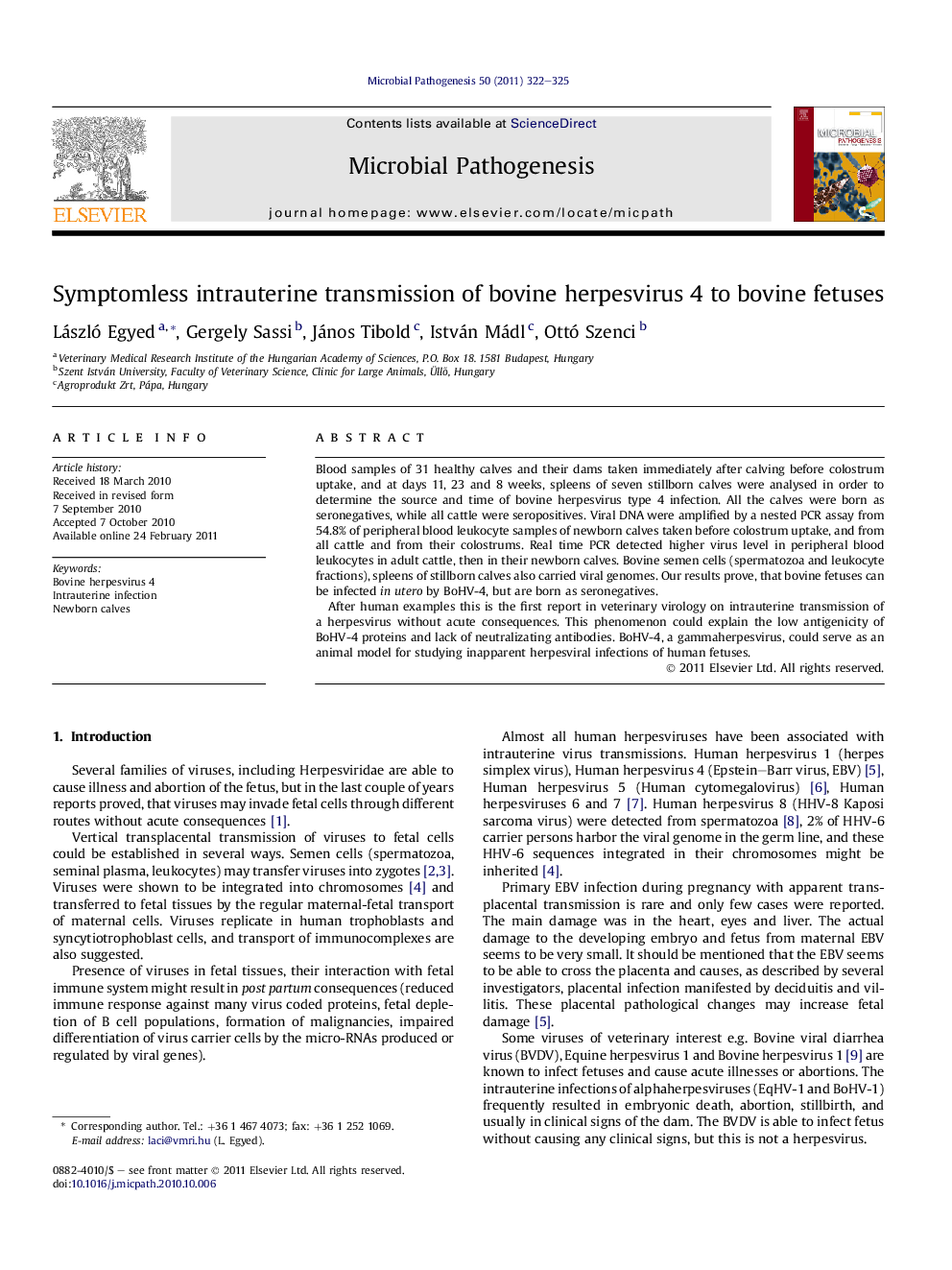| Article ID | Journal | Published Year | Pages | File Type |
|---|---|---|---|---|
| 3416724 | Microbial Pathogenesis | 2011 | 4 Pages |
Blood samples of 31 healthy calves and their dams taken immediately after calving before colostrum uptake, and at days 11, 23 and 8 weeks, spleens of seven stillborn calves were analysed in order to determine the source and time of bovine herpesvirus type 4 infection. All the calves were born as seronegatives, while all cattle were seropositives. Viral DNA were amplified by a nested PCR assay from 54.8% of peripheral blood leukocyte samples of newborn calves taken before colostrum uptake, and from all cattle and from their colostrums. Real time PCR detected higher virus level in peripheral blood leukocytes in adult cattle, then in their newborn calves. Bovine semen cells (spermatozoa and leukocyte fractions), spleens of stillborn calves also carried viral genomes. Our results prove, that bovine fetuses can be infected in utero by BoHV-4, but are born as seronegatives.After human examples this is the first report in veterinary virology on intrauterine transmission of a herpesvirus without acute consequences. This phenomenon could explain the low antigenicity of BoHV-4 proteins and lack of neutralizating antibodies. BoHV-4, a gammaherpesvirus, could serve as an animal model for studying inapparent herpesviral infections of human fetuses.
